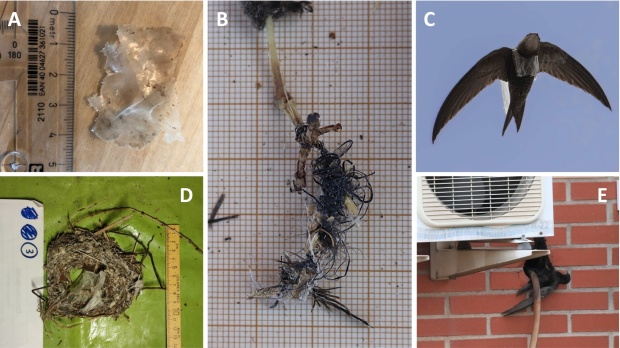Impact of Plastic Pollution on Swift

New Study Reveals Impact of Plastic Pollution on Swift Bird Species
First Research to Demonstrate Anthropogenic Materials in Swift Nests
A groundbreaking study has unveiled the presence of plastic and other human-made materials in the nests of three swift species, signaling an alarming interaction between wildlife and atmospheric plastic pollution. This is the first study to reveal the extent of such contamination in swift nests, highlighting a previously unrecognized threat to terrestrial bird species.
Researchers analyzed 487 nests from 25 colonies across seven European countries, focusing on three swift species: the common swift (Apus apus), the pallid swift (Apus pallidus), and the alpine swift (Tachymarptis melba). The findings were striking: 36.5% of the nests contained synthetic materials, predominantly plastic debris. Of particular concern, 85% of pallid swift nests were found to contain plastic.
The study also uncovered a direct correlation between human activity and the likelihood of plastic being incorporated into the nests. In regions with a greater human footprint, such as urban areas, the probability of finding plastic in swift nests increased significantly.
Key Findings:
• Plastic in Nests: 36.5% of swift nests contained plastic debris, with the highest concentration found in pallid swifts.
• Human Footprint Link: Nests in areas with higher human activity showed a greater likelihood of plastic contamination.
• First of Its kind: This research is the first to document the interaction between atmospheric plastic pollution and wildlife.
“This study provides clear evidence that plastic pollution is not just a marine issue, but a widespread environmental concern that also affects terrestrial species like swifts, particularly those that spend much of their life in the air,” said Álvaro Luna, lead author of the study. “The presence of plastic in nests, along with instances of entanglement, suggests that plastic in the atmosphere poses a growing threat to bird welfare.”
The findings raise serious concerns about the broader environmental implications of atmospheric plastic circulation and its impact on various ecosystems and wildlife. As plastic pollution continues to infiltrate even the most unexpected areas of nature, this study calls for urgent action to mitigate its far-reaching consequences.
Members of ALKA Wildlife contributed to this study with data from the Czech Republic and helped source observations from other countries.
The complete study is available online at: https://www.sciencedirect.com/science/article/pii/S004896972405321X
________________________________________
About the Study
This study represents the first comprehensive assessment of plastic contamination in the nests of swift species and how plastic pollution transported by the atmosphere interacts with wildlife. The research underscores the need for further investigation into how atmospheric plastic is affecting terrestrial wildlife, as well as the importance of addressing plastic pollution at both local and global levels.

